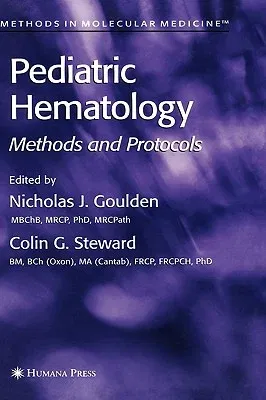Much of the progress in the diagnosis, classification, and treatment of
childhood hematological disorders has come from a partnership between
clinicians and scientists. Indeed, access to molecular techniques is now
an integral part of the practice of modern pediatric hematology. The aim
of Pediatric Hematology: Methods and Protocols is to provide a
collection of scientific protocols that cover the major aspects of the
discipline. Most clinicians will be familiar with the difficulties
inherent in establishing the underlying diagnosis in genetic marrow
failure syndromes. A particular concern is failure to diagnose those
associated with DNA repair defects. In Chapter 1, Dokal and colleagues
present simple protocols for the molecular investigation of Fanconi
anemia and dyskeratosis congenita. Molecular diagnosis is also important
in children with congenital pure red cell aplasia, owing to the highly
variable phenotype of this condition. In Chapter 2, Ball describes
relevant protocols for the investigation of Diamond-Blackfan anemia.
Hereditary hemoglobinopathy is a major cause of death and morbidity
throughout the world. This area has seen great advances in screening and
antenatal diagnosis. In Chapter 3, Old details protocols for the
molecular diagnosis of most forms of hemoglobinopathy. High-quality,
accurate molecular testing on small amounts of material has been
fundamental to progress in antenatal diagnostics. The introduction to
his comprehensive chapter includes a discussion of the general
principles that underpin these studies. In contrast to hemoglobinopathy,
severe hemophilia is uncommon.

